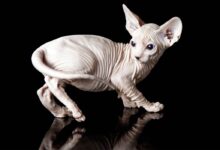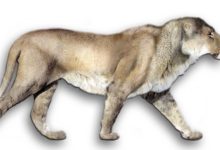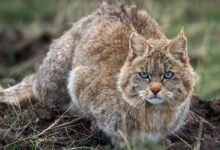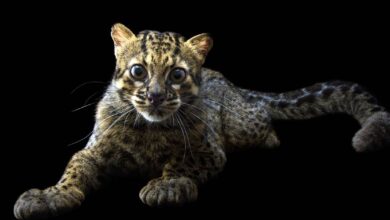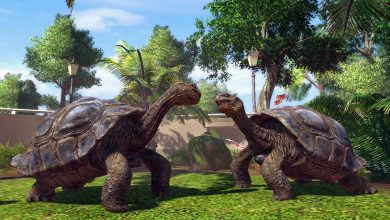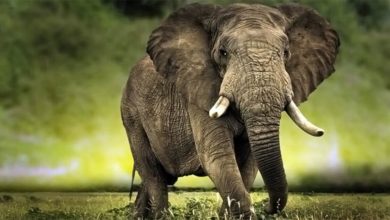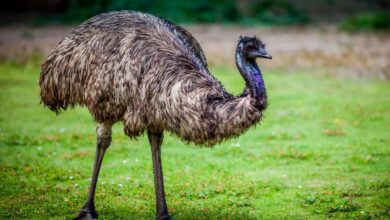Oriental Shorthair cat and Oriental Longhair cat
Twin brother of a Siamese cat, distinguished by a variety of colors. Its temperament, disposition and lifestyle are almost 100% identical to that of a Siamese relative. Nevertheless, let’s focus on the oriental cat as a separate, unique and beautiful representative of the domestic cat, because the article below was created about it.
FIFe classification
- Category IV: Oriental cats
- EMS code: ORL (Oriental Longhair Cat), ORS (Oriental Shorthair Cat)
- Names: Oriental longhair, Oriental shorthair
- Country of origin: USA

History and origin of the breed
Thailand, formerly known as Siam, was the birthplace of many cat breeds, including Siamese cats. These animals were prized for their aristocratic appearance, which perfectly suited European palaces. At the end of the 19th century, many Siamese cats were brought to England.
British breeders showed a keen interest in Siamese-type cats, but were looking for a breed with more color variations. In the 1950s, a completely new breed was developed – the oriental cat. It was created by crossing Siamese cats with British Shorthair and Russian Blue cats. The Americans quickly created their own variation of the Oriental cat by crossing the American Shorthair with the Siamese and Abyssinian cat.
In the beginning, breeders of the Siamese breed were very opposed to such matings. However, the rapidly growing popularity of oriental cats dimmed the voices of opponents. The new breed has become a real event. Over time, two variants of hair developed: long and short.
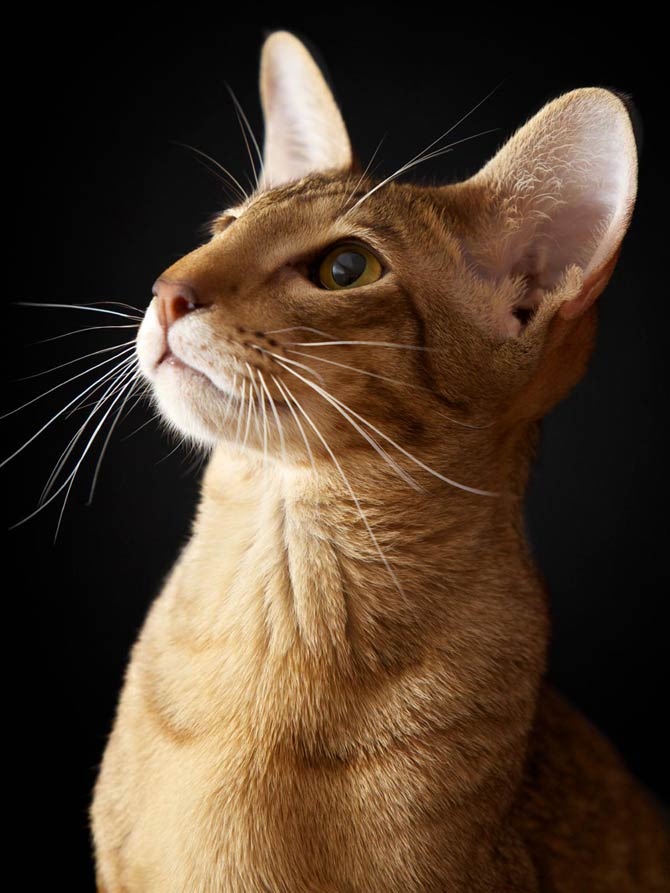
Characteristic
Appearance
Apart from the differences in color, the oriental cat is slightly different from the Siamese cat. Both breeds have slim, long and muscular bodies, pointed, large ears and beautiful almond-shaped eyes. The head is wedge-shaped, the muzzle tapers visibly towards the nose, forming a triangle. The legs are long and slender – the hind limbs are longer than the front limbs. The paws are oval in shape, the tail is thin, whip-shaped. The hair is of medium length, on the other hand, smooth and soft.
Color variations
There are many color variations within the breed. Among them, we can mention ebony, white, chestnut, blue, as well as bi-color, brindle and tortoiseshell patterns. Depending on the coloration, the irises may be blue, green or bicolor.
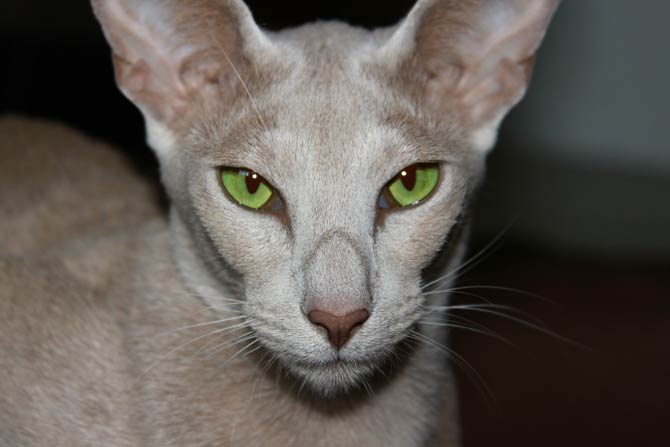
Temperament
The bodies of the Oriental and Siamese cats and their disposition are almost the same. Persistence, “talkative” and the need for attention are the hallmarks of these breeds. Oriental cat loves owners, loves to help household members in their activities and accompany them in their daily duties. For this reason, these cats walk with their owners step by step. When the owner sits down, the cat eagerly jumps on his lap, and at night he falls asleep in bed, under the duvet, with its head on the pillow.
Being nosy, the need to be with people and getting attention are traits that create an explosive mixture for many people. Therefore, the oriental cat, like the Siamese cat, is not suitable for very calm people. This cat requires a lot of physical activity, a lot of fun and tenderness. If the pet feels good with its owner, it will become its great friend. Therefore, it cannot be left alone for too long, so when the household members stay away from home for days, it is advisable for an oriental cat to have its own friend, preferably another cat.
Oriental cat shows high intelligence, agility and physical condition. It loves to have fun in a variety of ways. This keeps its brain active all the time. Do not be surprised when your cat wants to climb a tall tree – this may be one of hisits favorite games. However, its nosiness sometimes leads to comical situations. It is able not only to open doors and cabinets, but also to rummage in a purse in search of something interesting, preferably shiny.
Therefore, it is not recommended for an oriental cat to be left alone with itself, without access to any entertainment. Otherwise, the pet will find something for itself, e.g. it will start playing with a roll of toilet paper, or it will jump on the curtains. If the owner shows affection to the cat too infrequently, the cat will become lethargic and grumpy.

Health condition
There are several diseases within the breed. Some of them may be genetic:
- bronchial diseases including asthma
- squint
- nystagmus
- retinal atrophy
- pathological widening of the lumen of the esophagus (so-called megaesophagus)
- amyloidosis
- lymphomas
- cat hyperesthesia – a nervous disorder involving overreacting to harmless stimuli, e.g. obsessive licking the hair after being stroked by the caregiver.
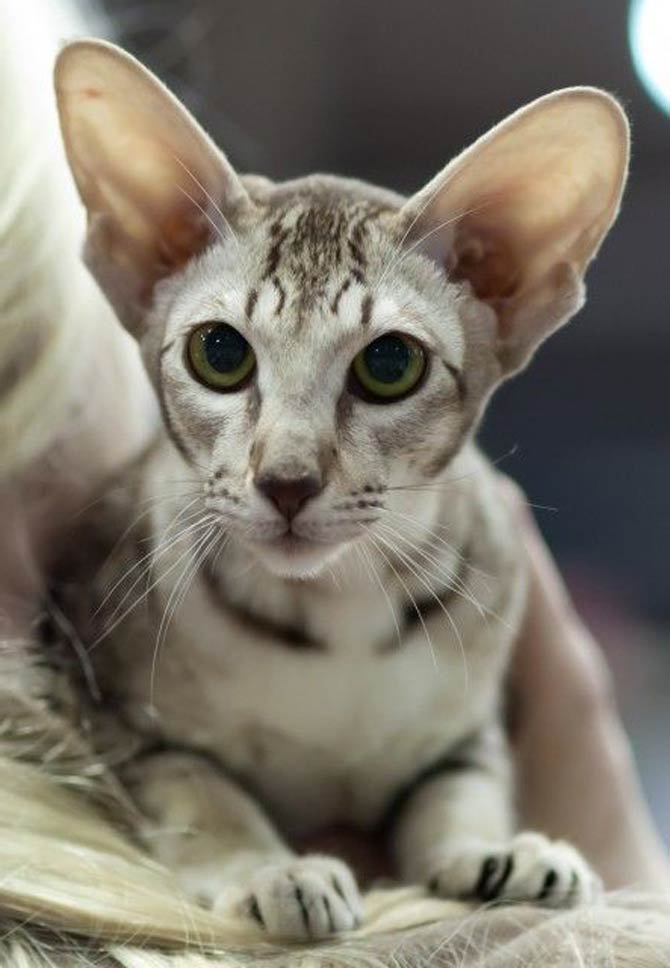
Detailed data / dimensions (size)
Oriental cat
- Height at the withers: 20-25 cm (8 – 10 in)
- Weight:
- females: 2.25-3.65 kg (5 – 8 lb)
- males: 3.2 – 4.5 kg (7 – 10 lb)
- Lifespan: 12-15 years
Oriental cat – interesting facts
- Nowadays, the breed is not accepted by several felinological federations, while some require that it be classified as Siamese cats.
- More than 300 colors and coat patterns are classified within the breed.



